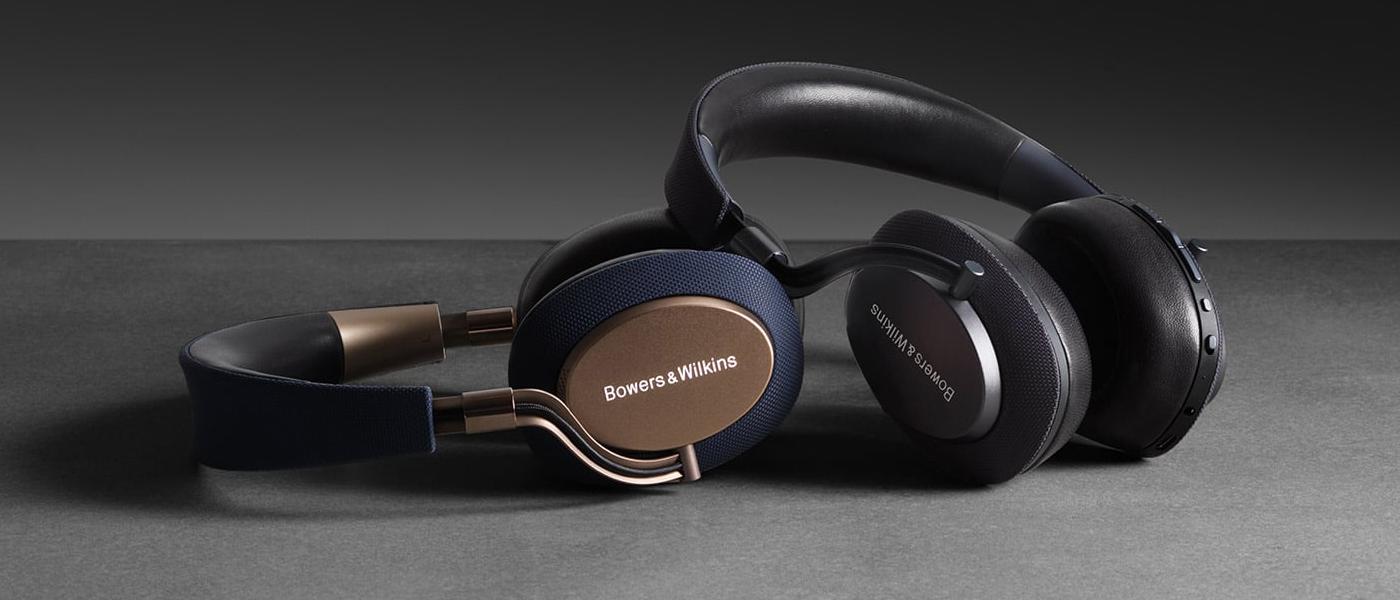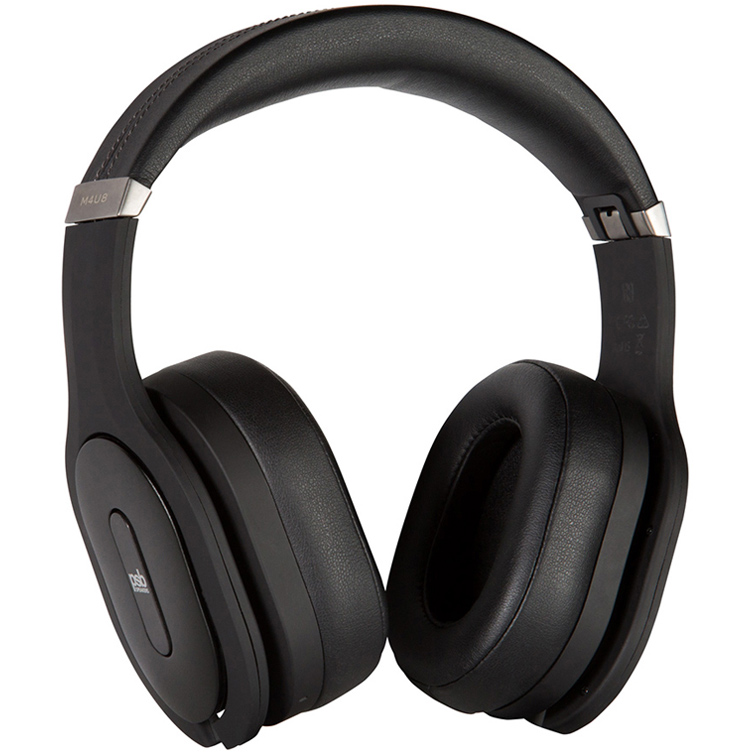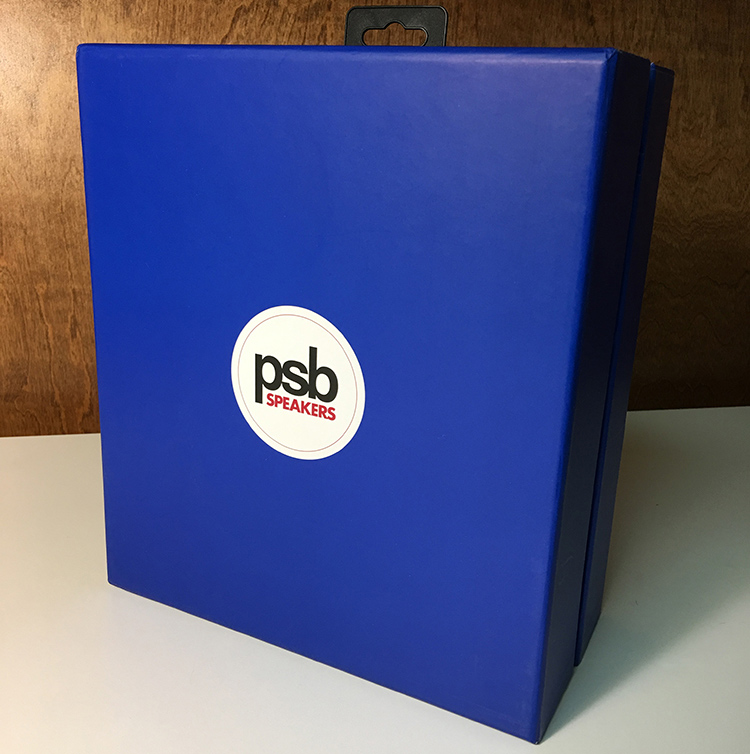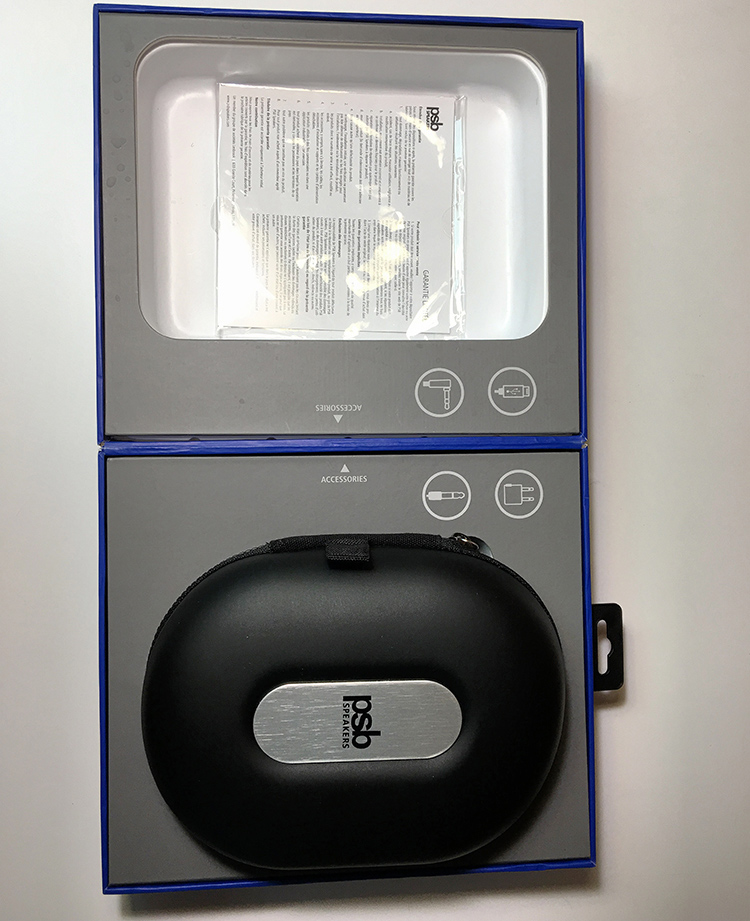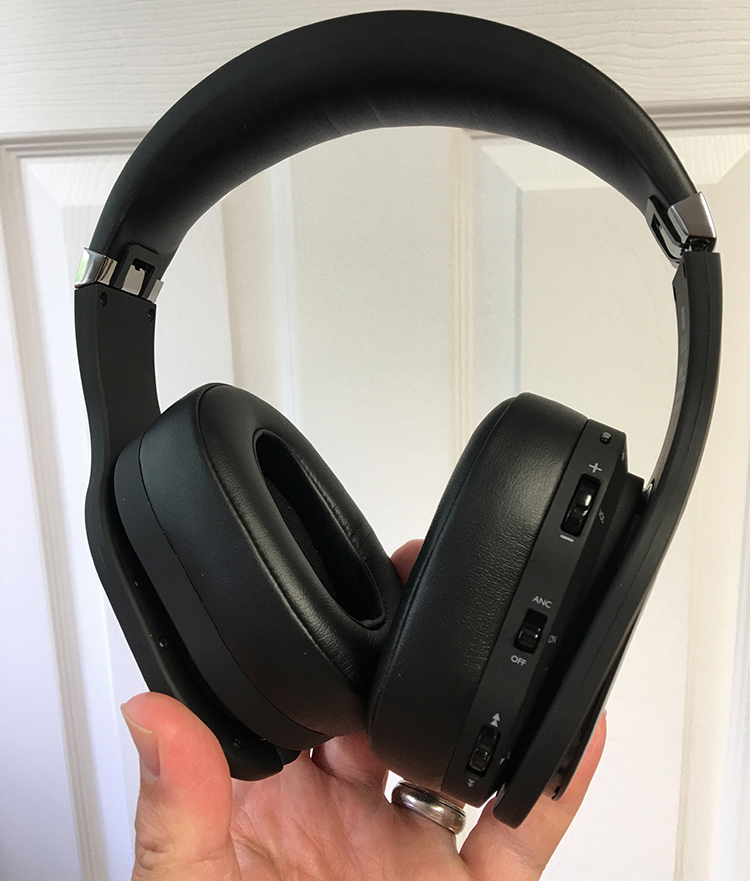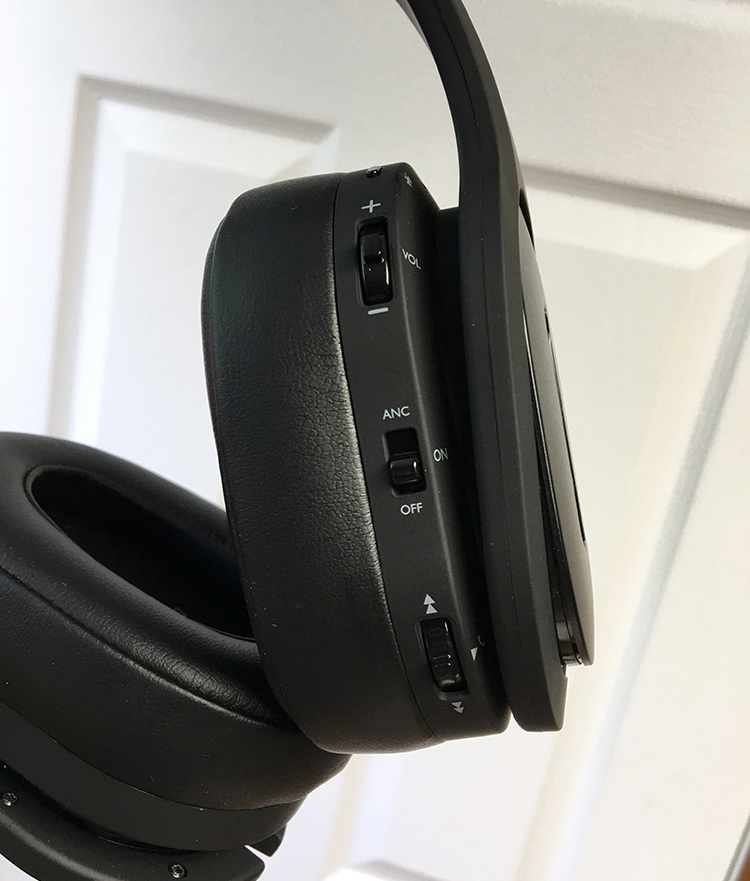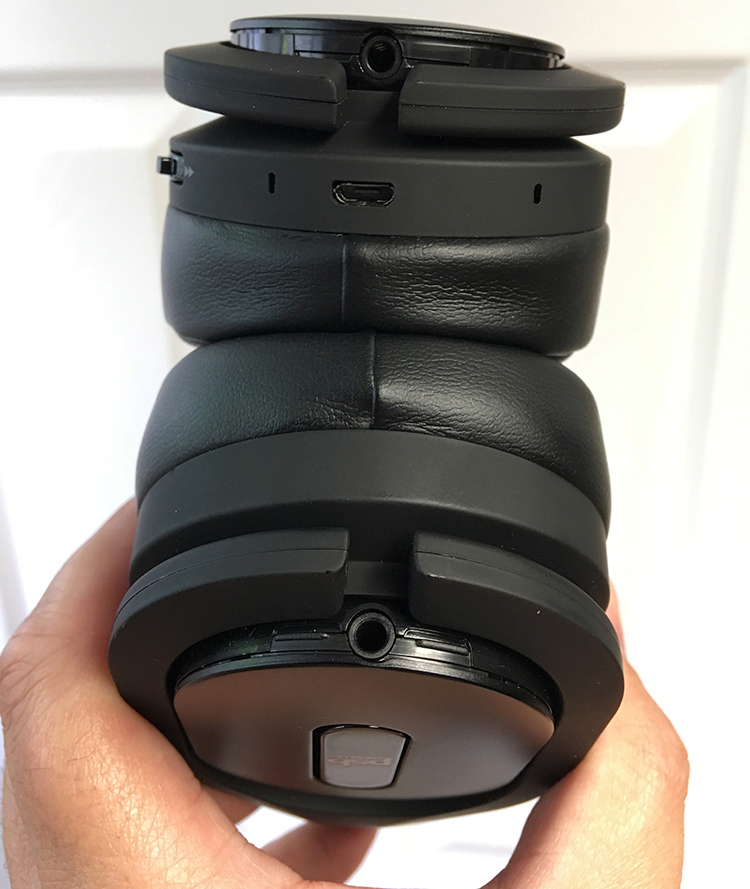PSB, not content to leave the wireless noise cancelling headphone market to the likes of Bose and Sony alone, bring us a worthy looking addition to the tether-less can fraternity. The M4U 8 Wireless Noise Cancelling Headphones promise us high quality sound and comfort while bringing the following features to the table:

PSB M4U 8 Wireless Noise Cancelling Headphone
- PSB’s RoomFeel technology helps give the impression that you are listening to high quality speakers in a well treated room.
- Effective Active Noise Cancellation system.
- Can be connected via Bluetooth, analog wired, or USB.
- AptX HD Bluetooth codec for supported devices and AAC codec for iOS devices.
- Smart collapsible design is perfect for travel.
- A connection for standard wired operation is available on both ear cups.
- Good quality construction.
- Comfortable fit.
- 15 hour running time on a full charge.
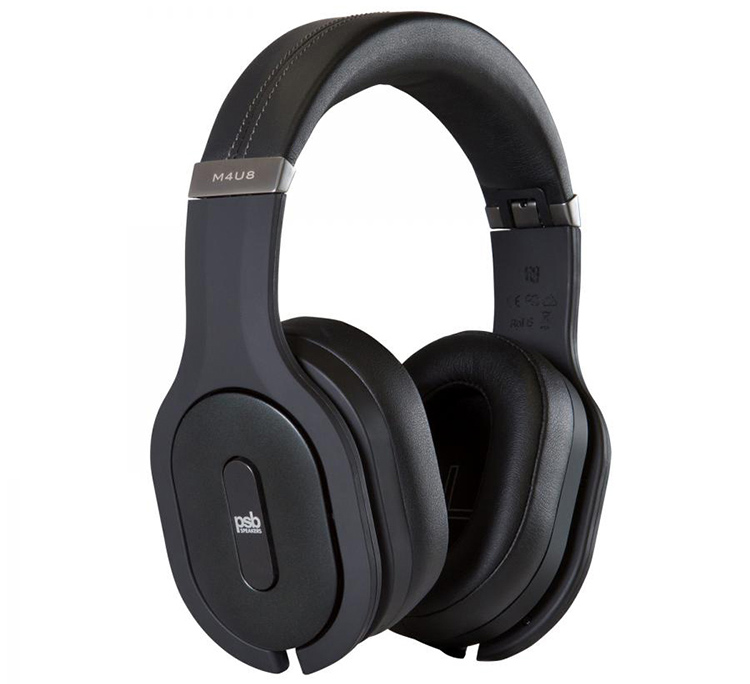
Having sampled PSB’s RoomFeel headphone technology on a few different products now, I can testify to the fact that it provides real advantages to the headphone listening experience. Up until now however, those benefits have been tethered (literally) to wired headphones and earphones. With the introduction of the M4U 8 Wireless Noise Cancelling Headphones, Paul Barton and his merry band of audio minions have effectively “cut us loose” in a bid to enjoy exemplary headphone sound quality, beamed to our noggins through the ether.
Design:
Closed-back Headphones with Dynamic Drivers.
Driver Size:
40.0 mm
Manufacturer Freq. Response:
20 Hz – 20 kHz +\- 1.5 dB
Bluetooth Codecs Supported:
SBC, AptX, AptX HD, AAC
Nominal Impedance:
32 Ohms
Weight:
342 grams (12.0 ounces)
Available Colors:
Jet Black.
Accessories:
One detachable 1.5-meter (59.0-inch) headphone cable with 3.5mm plug, one 1.5-meter (59.0-inch) USB cable, one ¼-inch Phono plug adapter, one dual-prong airline adaptor, one pair of additional ear pads, cleaning cloth, one carabiner, carrying case.
MSRP:
$399.00 USA
Company:
SECRETS Tags:
PSB, RoomFeel, Wireless, Bluetooth, ANC, AptX., Wireless Noise Cancelling Headphone Review 2018
The PSB M4U 8 design is very much in keeping with what PSB has come to be known for. Practical, straightforward design, with nothing superfluous, but featuring intelligent touches and enough class that allows an owner the occasional flaunt when appropriate. The main body of the headphones consists of durable, soft-touch coated plastic. The hinge mechanisms and extension arms are made of chromed metal and the headband is not overly broad, but well padded and covered in a stitched black leatherette. The aforementioned hinges are set up to allow the M4U 8 to collapse and fold into a more convenient travel-sized dimension.
Enough that you can get by without the semi hard-shell case if need be. The earcups are made of the same soft-touch plastic as the headphone body and have a fairly limited range of movement across the four axes. The ear pads are thick and well padded, covered in more stitched black leatherette. While billed as over-the-ear headphones the earpad openings are not as big as one would expect for such a headphone type. However, they are designed to allow outer edge of your ear lobe to tuck into a ridge, inside and underneath the earpad opening. This achieves the desired seal and allows the headphone tuning to be experienced correctly. The outside of the right ear cup is home to all the controls and permits quick finger access without the need to hunt for your digital audio player or phone every few minutes.
From top to bottom the controls are: Bluetooth pairing button, Volume Up/Down/Push to listen through, Power and Active Noise Cancellation On/Off, Track Forward/Back/Push to Pause-Answer Phone. At the bottom of the right earcup is the micro USB port for charging or to connect directly to a computer’s USB port. When connected to a computer via USB, the M4U 8 will be treated as an external sound card by the computer’s operating system.
At the bottom of each ear cup is a 3.5 mm analog jack for standard wired connection to a traditional headphone jack. A very convenient feature allowing an owner to hook up the cable to what ever side is most suitable in a given situation.
The PSB M4U 8 are powered by a pair of rechargeable AAA batteries that are user replaceable and can be accessed by gently prying off the outside cover of the left ear cup. When no charging resources are available, the rechargeable batteries can be substituted with alkaline equivalents if you happen to run out of juice.
From a technical standpoint, these are closed back headphones using a pair of 40mm dynamic drivers. They can be listened to in a purely passive mode (wired like traditional headphones), in active mode with onboard amplification (both wired and wireless), and active mode with noise cancellation (both wired and wireless). In any of the active modes of listening, the M4U 8 take advantage of PSB’s RoomFeel technology. RoomFeel is a type of tuning that allows the headphones to mimic the power response of a flat-measuring pair of full-range speakers, properly set up, in a well-treated room. As headphones at large are available in a variety of different tunings, as decided on by each respective manufacturer, the RoomFeel methodology makes a good deal of sense in that almost all the music we listen to, has been mixed and mastered using speakers in the studio as a reference. Headphone listening is, in most cases, an afterthought in the music production process. So, trying to recreate the sound of textbook full-range speakers, performing at their best in a perfected environment, heard through your headphones, seems to be a reasonable goal to shoot for.
Secrets Sponsor
The research that eventually led to RoomFeel was begun in the mid-1970s at Canada’s National Research Council. At that time work was being done in they study of human hearing with an eye to improving designs and technology for medical hearing aids. PSB’s Paul Barton, who was involved in the research, saw that the information that was learned could also perhaps be applied to improving headphone design and performance. Several years, and many more hours of testing and research later, RoomFeel emerged as a prime feature on a number of PSB and NAD personal audio products.
The M4U 8 are equipped with Qualcomm’s newest iteration of it’s AptX Bluetooth wireless protocol, AptX HD. AptX HD is claimed to be able to transmit at up to a 24 bit/48 kHz resolution for more faithful High Definition music file playback. Standard AptX is billed as delivering “near CD quality” playback. AptX HD is backwards compatible with regular AptX and as of this writing, there are a handful of smartphones and DAPs that support AptX HD transmission. The headphones are also fully compatible with the AAC Bluetooth codec that iOS devices use.
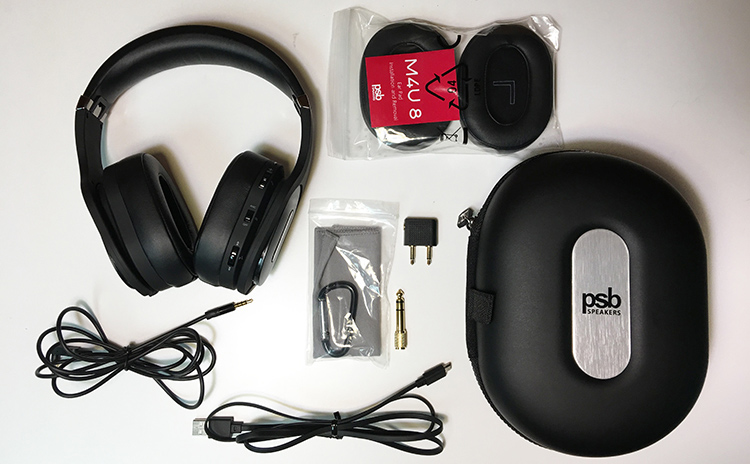
Accessories that come with the M4U 8 include a semi-hard shell carrying case, a traditional headphone cable with 3.5mm connectors on both ends, a ¼-inch Phono adapter, a dual prong in-flight adapter, a micro USB charge cable, a cleaning cloth, a carabiner and an extra pair of ear pads.
For this review, the PSB M4U 8 headphones were primarily paired with my iPhone 6S Plus, my Microsoft Surface Pro 3 tablet and a new Shanling M0 DAP. Connection was made using Bluetooth wireless and both traditional wired and USB connection where appropriate. My iPhone uses the AAC Bluetooth codec while the Shanling DAP has standard AptX, AAC, LDAC and LDAC HD codecs at it’s disposal. I could not get a bead on what Bluetooth codec the Surface tablet was using unfortunately.
Let me start by saying that headphones are probably the most intimate piece of audio gear you can own. As you are physically in contact with them (possibly for large swaths of time) they have a whole other set of parameters that they need to be judged by. Beyond the obvious sound quality judgements, you need to look at comfort, ergonomics and aesthetics. That’s why I feel that making snap decisions about headphones is always risky business.
One really needs to live with them and use them for a little bit to really get a sense if they pass muster for a given listener. This, at least, has always been my overarching method when I review headphones and I think it’s important to bring it up to readers from time-to time.
Now, with that in mind, I think PSB has produced an exceptional piece of audio headgear with the M4U 8. A few quick points that stood out to me from the get-go were: A) I liked the styling. Clean, practical and straightforward. B) The way that they fold up for travel is very convenient, even when not using the travel case. C) The available analog headphone jack on the bottom of each earcup is a stroke of ergonomic genius.
When I first tried on the PSB M4U 8 I wasn’t entirely sure that we were going to get along. I found the level of clamping force to be a little firm for my liking and the earpads felt like they sat on my ear edges versus completely enclosing them. Now, I have a big head and probably above-average size ears. And while the headband provided plenty of room for adjustment, I was worried, at first, that these headphones might not be so comfortable for folks in possession of generous amounts of cranial real-estate. After about a week of regular use, I found that things changed a bit. The clamping force issue pretty much disappeared. Whether it was through my getting used to it or the headband loosening up, I can’t completely be sure. The ear pads did loosen up a little and the back edges of my ears began to readily slip into a ridge underneath the ear pad openings whenever I put the M4U 8s on. I found out later, from talking to Paul Barton, that this is how one’s ears are supposed to sit in the ear pads with these particular headphones. So, it could just be that small and average-eared persons will have no issues whatsoever when first trying on a pair of M4U 8s and getting a comfortable fit. While some of us more “aurally well-endowed” specimens of humanity may have to work on it a little bit more. Note to PSB, if possible you might want to consider making that extra set of earpads, included with the headphones, a version with a slightly larger opening. Just to add some flexibility for folks like me.
With the comfort issues mostly sorted out, I found the PSB M4U 8 to be a welcome companion to use on a daily basis. Bluetooth pairing with my both my iPhone and Surface tablet was a simple matter. And once the initial pairing had been done, the headphones would automatically pair back up with whatever of the two devices it found active and available when powered back on. When I initially began this review, I didn’t have any AptX or AptX HD audio devices to pair with the headphones. I consulted Paul Barton and he confirmed that, for iOS devices, the M4U 8 headphones would use the Advanced Audio Coding (AAC) Bluetooth codec versus the more utilitarian SBC codec to achieve the best sound quality. AAC transmits at about 256 kbps and is reputed to be an efficient and generally good sounding codec, especially if your digital music library was created or resides in the Apple ecosystem. Overall sound quality was very good from both my devices via Bluetooth. Everything sounded clear with no breakup or static of any sort. I felt that bass with the M4U 8 was extraordinarily good. It didn’t sound bloated or overly goosed in level but just deep and powerful and you definitely felt it. The midrange frequencies were also reproduced very well, with vocals having a particularly good amount of clarity and presence. I did however feel that the area where the midrange transitioned into the upper bass sounded a little thick at times, for my tastes. It wasn’t something that was overly objectionable, but I tended to notice it more when listening to classic rock over anything else. It made about a handful of songs on my iPhone playlist sound flatter than I am accustomed.
About a couple of weeks into my testing I got the Shanling M0 micro-sized DAP and it had standard AptX Bluetooth to use with wireless devices like the M4U 8. AptX claims to transmit at “close to CD quality sound” with 16 bit/44.1 kHz resolution using a 4:1 compression ratio at 352 kbps (AptX-HD can move up to 24 bit/48 kHz, with the same compression ratio, at 576 kbps). Subjectively, I didn’t feel that I noticed that low-mid to upper-bass thickness issue when listening to the headphones using AptX and the Shanling DAP. That region definitely sounded a little more natural to me with this combo. In all instances, the M4U 8 handled high frequencies very well with plenty of detail and shimmer but no grain or glare to speak of. I should note that of all the different methods that I tried when listening to these headphones, with any of my hardware, I feel that I got the best quality sound when using the analog wire connection and the headphones in active mode. Bluetooth was a close second but, in wired-active mode, I noticed a bit more clarity in the sound overall and that lower-midrange/upper-bass thickness had completely vanished. Whenever you use the wire with the M4U 8, I highly recommend you put the headphones in active mode. You can listen to them in wired-passive mode in a pinch, but you will lose the advantage of the RoomFeel tuning, as that only works in the active modes, and it makes a significant difference in sound quality. Personally, I wouldn’t want to be without it.
I have nothing but good things to say about Active Noise Cancellation (ANC) feature of these headphones. It turns on or off with just the flick of a switch and, while it doesn’t have any adjustability for strength, I found it to be completely effective in the various situations that I tried it. While spending one weekend outdoors doing some gardening and landscaping work, the M4U 8’s ANC was ruthlessly effective at dispatching the sound of my neighbor’s riding mower from intruding on my music. Another time, while waiting in my doctor’s office, the ANC did away with the annoying sound of an overly loud office HVAC system. And whenever the nurse would come out to call in the next patient, I would lightly push down on the volume control. This would almost mute my music and allow me to hear through the ANC to see if she was calling my name. Brilliant! On morning walks through my neighborhood, ANC would just eliminate most of the surrounding ambient noise, but the system seemed tuned to allow just enough of say a car horn or yell from a neighbor to come through and get my attention. I also noticed minimal change in the tone and timbre of the music whenever I switched the ANC on or off. It sounded fairly seamless and transparent.
The Bluetooth range of the M4U 8 was also better than I was expecting. With the headphones paired and my iPhone playing some music, I placed it on a table in our home’s entryway and walked through our living room, into the kitchen, past the laundry room and into our garage all the way to the farthest corner. The music kept playing without interruption or any discernible degradation in quality. We are talking about 50-60 feet worth of distance and two walls between the headphones and my cell phone without a break in the signal. I would say that’s pretty good! And, as a practical matter, there is something to be said for not having the wire between your headphones and your player/phone to get snagged somewhere or generally get in the way. It’s practically life-changing if you take these to the gym!
Secrets Sponsor
Answering phone calls using the M4U 8 was also a seamless experience. Call quality in all cases was clear and strong with music pausing conveniently to answer and starting back up when done.
Some of my favorite playlist tracks to listen to with the PSB M4U8 are:

A live recording of one of the greatest drummers to ever play, along with his big band, performing one of his signature pieces. It’s basically an extended instrumental work with a lot of moving parts and when the pace picks up, there is a lot going on, very quickly. The M4U 8 do a fine job of keeping all the instrumentation clear and discernible. These cans bring out all the brassiness of the complex horn section without it ever veering into abrasive sounding territory.
The saxophone solo about midway through the song sounds particularly natural and delicious. The imaging put out by the M4U 8 with this track is suitably large and it sets up a nice stage for Buddy Rich to show off when one of his numerous solos come up. Cymbals have a great crispness to their sound and the kick drum hits have a nice weight and punch to them.

This track is part of a compilation CD made by various acoustic guitar players performing on Taylor guitars. The PSB M4U 8 excelled at recreating the spaciousness and ambience of this track. The harmonic notes that play rhythmically throughout the song, ring with lovely clarity and purity of tone. The string detail in Walden’s playing is very clear and these headphones reproduce the various scrapes, picks and finger sounds with ease.
Switching on the ANC did nothing to dull the delicacy and detail of those guitar harmonics at all.

Italian singer/composer Paolo Conte’s gruff and raspy vocals come across with plenty of weight and detail through the PSB M4U 8, all the while successfully relaying the ambience of an intimate recording space too. The intentionally extended “S” sound when he sings the lyric “Jazz” (sounds like an S instead of a Z when sung in Italian) sounds detailed and is dripping with all sorts of character through the PSBs. Conte’s piano playing also sounds tonally natural with a good sense of body to the lower register notes.
The drummer’s brushes sounded so natural and were rich in detail as they swept over the drum skins, meanwhile, the stand-up bass produced great deep notes that didn’t get lost in the shuffle either.

This is from the recently remastered, special edition 3-CD set produced by La-La Land Records. This is a properly massive orchestral piece and the PSB M4U 8 project a commensurately large sound stage. The remastering on this edition is so noticeably better from what has been available before and these headphones particularly had me noticing the added detail in the massed strings and harp playing.
The horn section had great separation and tone through the M4U 8 and the loud cymbal crashes had plenty of sheen and detail in the decay while not getting abrasive sounding. The PSBs also gave excellent bass foundation to this track where I actually felt the bass drum and tympani doing their work. The impacts of the drum hits throughout the track were impressive.
The PSB M4U 8 Wireless Noise Cancelling Headphones are an excellent and easy recommendation to make for someone who needs a great sounding pair of cans for travel, to accompany an active lifestyle or for the gym. The ergonomics are top-notch, the Bluetooth sound quality is extremely good, battery life is more than reasonable, and the ANC feature is effective in all manner of situations. They are also easy to recommend as a standard, wired pair of headphones as well. They sound even cleaner that way and you can take advantage of both the noise cancelling and the RoomFeel tuning as well if you so choose. Speaking about RoomFeel tuning as a concept, I think that it is a beneficial feature to have in a product of this type. It is a logical and well-researched avenue of development and it is a direction that I wish more headphone makers would look at to improve the sound of this product category overall.
I really enjoyed my time with these headphones and if I had anything to nitpick about them, it would be that the M4U 8 might benefit by having an optional pair of earpads with bigger openings to better accommodate big-headed/eared folks. This may be answered somewhat in the sister product, the NAD VISO HP70 wireless headphones, a review for which is coming soon!
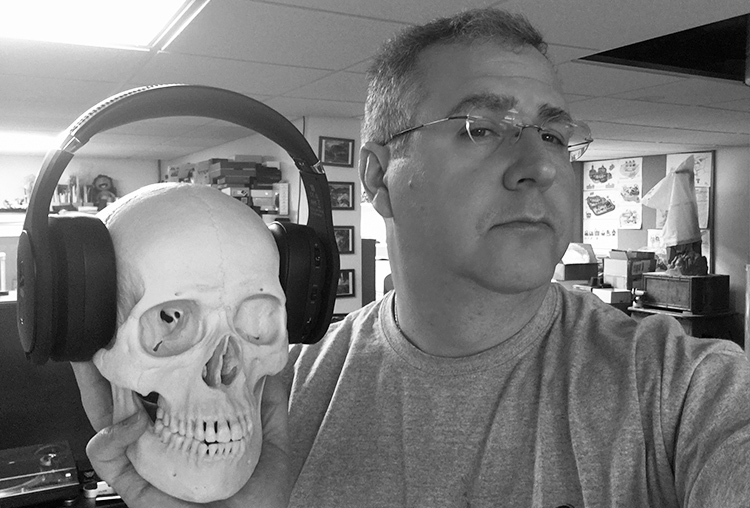
Excellent as regular headphones, the M4U 8 make an almost essential wireless travel or workout companion.
- High quality sound either wireless or wired.
- Effective noise cancellation technology.
- RoomFeel is the real deal.
- Ergonomics are well thought out.
- An extra pair of earpads with larger openings for bigger heads and ears.
- Maybe a touch less clamping force.


